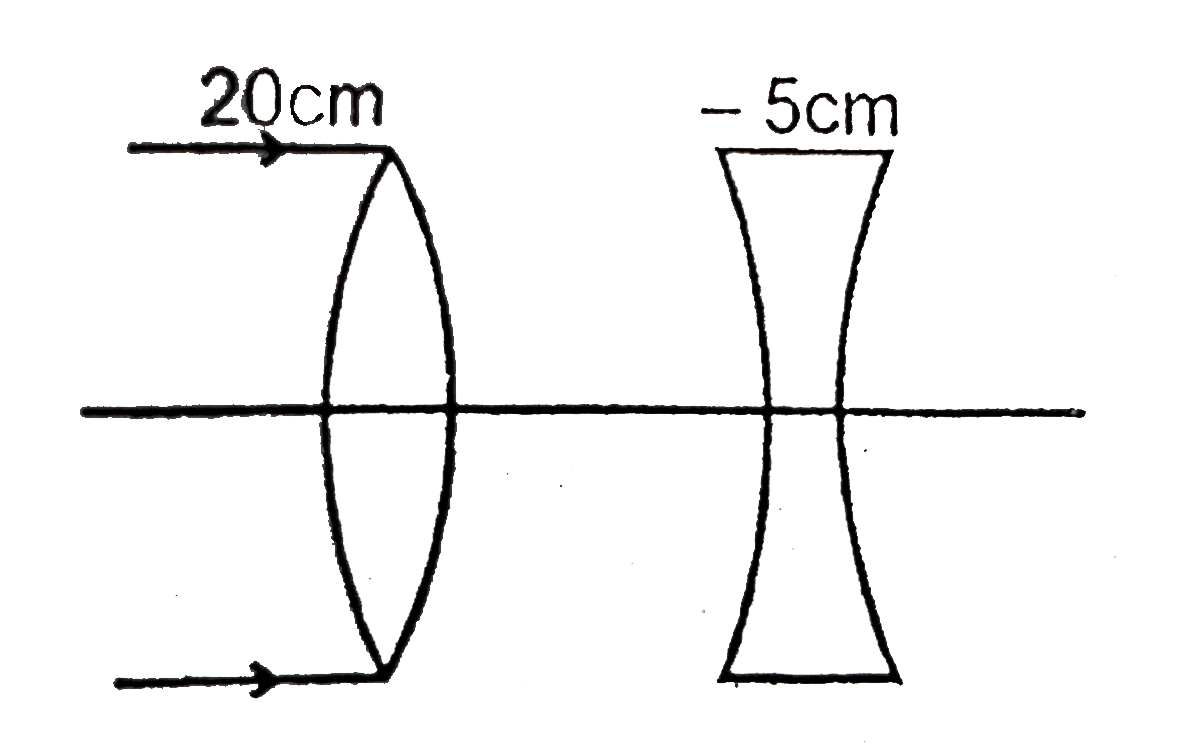n a parallel beam of white light is incident on a converging lens, the colour which is brought to focus nearest to the lens is
Violet
Red
The mean colour
All the colours together
The correct Answer is:a
Topper's Solved these Questions
- RAY OPTICSBOOK - ERRORLESS CHAPTER - RAY OPTICSEXERCISE - Prism Theory & Dispersion of Light
6 Videos
- RAY OPTICSBOOK - ERRORLESS CHAPTER - RAY OPTICSEXERCISE - Human Eye and Lens Camera
9 Videos
- RAY OPTICSBOOK - ERRORLESS CHAPTER - RAY OPTICSEXERCISE - Refraction of Light at Plane Surfaces
9 Videos
- MAGNETISMBOOK - ERRORLESS CHAPTER - MAGNETISMEXERCISE - Assertion & Reason
1 Videos
- WAVE OPTICSBOOK - ERRORLESS CHAPTER - WAVE OPTICSEXERCISE - SET
23 Videos
Similar Questions
A parallel beam of light is incident on a converging lens parallel to its principal axis. As one moves away from the les on the other side on its principal axis, the intensity of light
View SolutionA narrow and parallel beam of white light is incident on a convex lens, parallel to its principal axis. Draw a labelled diagram to show how coloured images are formed by the lens.
View Solution
Knowledge Check
A parallel beam of light is incident on a converging lens parallel to its principal axis. As one moves away from the les on the other side on its principal axis, the intensity of light
AFirst decreases and then increasesBContinuously increasesCContinuously decreasesDFirst increases and then decreases.If a convergent beam of light passes through a diverging lens, the result
AMay be a convergent beamBMay be a divergent beamCMay be a parallel beamDMust be a parallel beamIf a convergent beam of light passes through a diverging lens, the result
AMay be a convergent beamBMay be a divergent beamCMay be a parallel beamDMust be a parallel beam
In the figure shown a converging lens and a diverging lens of focal lengths 20cm and -5cm respectively are separated by a distance such that a paralel beam of light of intensity 100 wa/m2 incident on the converging lens comes out as parallel beam from the diverging lens. Find the intensity of the outgoing beam in wa/m2

View SolutionTwo parallel beams of light P and Q are incident normally on a prism and the transmitted rays are brought to focus with the help of a convergent lens as shown in Fig. 2.23. If the intensities of the upper and lower beams immediately after transmission from face AC are 4I abd I, respectively, find the resultant intensity at the focus.
View SolutionTwo parallel beams of light P and Q are incident normally on a prism and the transmitted rays are brought to focus with the help of a convergent lens as shown in Fig. 2.23. If the intensities of the upper and lower beams immediately after transmission from face AC are 4I abd I, respectively, find the resultant intensity at the focus.
View SolutionIf a convergent beam of light passes through a diverging lens, the result
View SolutionIn the figure shown a converging lens and a diverging lens of focal lengths 20cm and -5cm respectively are separated by a distance such that a paralel beam of light of intensity 100 wa/m2 incident on the converging lens comes out as parallel beam from the diverging lens. Find the intensity of the outgoing beam in wa/m2

View Solution
